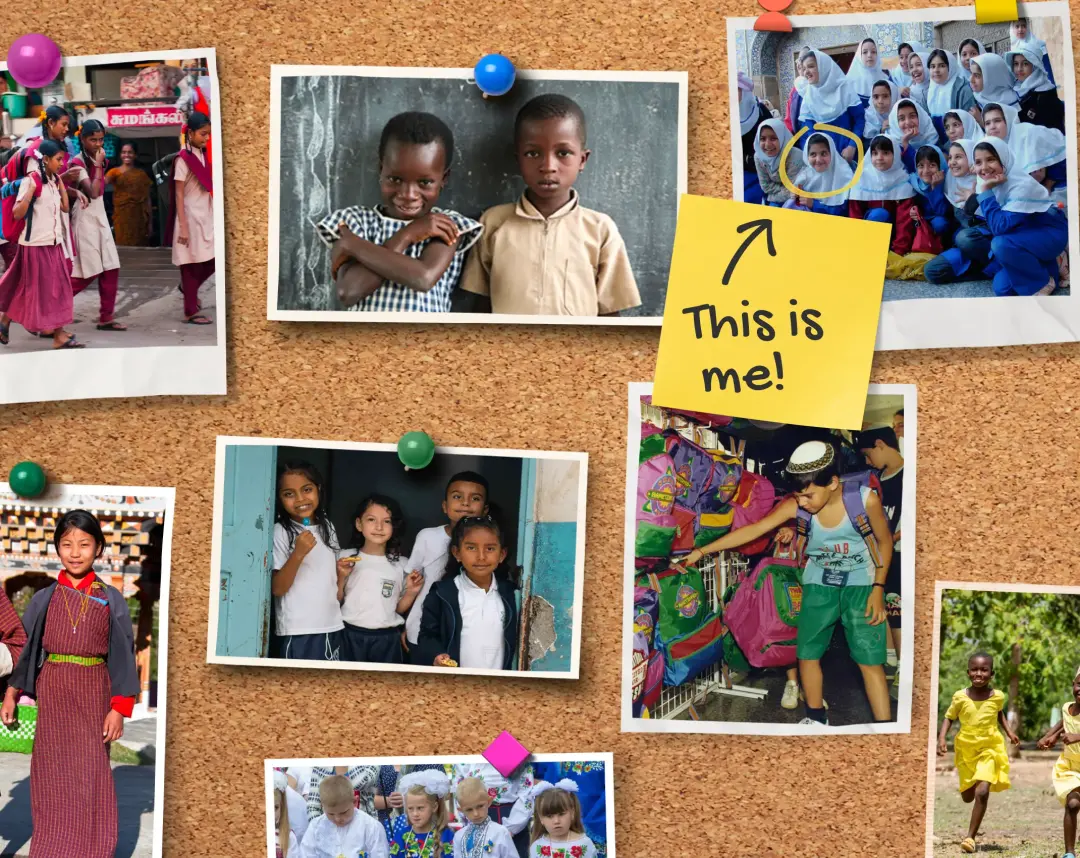Mathematical bodies?
Throughout history, images and works of art have influenced people’s ideas about beauty.
You may have seen an ancient statue of a Greek or Roman god, like this one of Hercules. They are super muscular!
Sometimes artists studied anatomy or even used math to create what they thought were perfect body proportions.

Photographic proof?
Have you ever taken a photo or video as proof that you saw something?
People are more likely to believe what they see in a photograph. But photos have a long history of being manipulated. Here is an example from 1909!
Nowadays we can quickly add a filter or edit an image on our phones or computers, back then it was all done by hand!

Beauty ideals
Images, television, advertising and social media influence our ideas about beauty and bodies.
But most of the images and videos we see are edited or manipulated. They create unrealistic beauty ideals that aren’t real!
It’s important to remember that photos can be changed, and don’t always reflect reality. Think twice before taking online advice!

The original influencers
Ideals of beauty and the body are different around the world. They’re often personal and influenced by values or culture. Some come and go, others stick around! Explore some of the stranger trends from the past in this gallery.

Where do we learn about beauty? It’s not taught at school. Role models, family and friends influence many people’s ideals.

The type of words we use can affect our body image. Try using some of the positive words above to describe yourself!

What we see also affects body image. Kids who watch TV are more likely to believe that men should be muscular and women thin!
What’s real?
With new technologies, photo editing, and AI, it can be hard to tell what’s real and what’s fake.
Unfortunately, many of the pictures we see today don’t show real life. This can affect how we feel about our bodies.
How can we learn what information, advice and images we can trust?

Tips and tricks!
Media literacy is all about understanding and being smart about what you see, hear, and read. The video above isn’t about beauty, but it does give some great tips and tricks!
Media Literacy
Not everything you hear or see online, on social media or on TV is true!
It’s important to ask questions and think critically. Ask your parents to help you understand if you're not sure about something.
It’s not always easy to tell whether an image is real or fake.
One way to check if an image is real is to use a reverse image search tool like Google Image Search or TinEye.
Reverse image searches let you see where else the has image appeared and what people are saying about it.
Remember that anyone can post almost anything online!
Asking these questions can help you discover the reasons behind a post: Where did the post come from? Who posted it? Why would they post it?
Celebrate diversity!
Want to know more?
Bibliography
Burke, J. (2023, August 16). Renaissance women and their killer cosmetics. Wellcome Collection. https://wellcomecollection.org/articles/ZL_EKhAAAM_a5XhA
Currie, E. (2021). A cultural history of dress and fashion in the Renaissance (First edition.). Zed Books. https://doi.org/10.5040/9781474206419
Eicher, J. B., Eicher, J. B., & Luvaas, B. (2019). The anthropology of dress and fashion : a reader. Bloomsbury Visual Arts.
Fitzharris, L. (2020, January 9). Our endless quest for eternal youth. Wellcome Collection. https://wellcomecollection.org/articles/Xhbw1RAAACYAQGee
Hill, C., & Steele, V. (2018). Exhibitionism : 50 years of the Museum at the FIT (First edition). Skira.
McNeil, P. (Ed.). (2021). A cultural history of dress and fashion in the age of Enlightenment (First edition.). Zed Books. https://doi.org/10.5040/9781474206389
Palmer, A., & Vincent, S. (Eds.). (2021). A cultural history of dress and fashion in the modern age (First edition.). Zed Books. https://doi.org/10.5040/9781474206402
Royal Museums Greenwich. Elizabeth I: Fashion and beauty. Royal Museums Greenwich. (n.d.). https://www.rmg.co.uk/stories/topics/elizabeth-i-fashion-beauty
Jugend und Medien. Selbstdarstellung & Schönheitsideale. Selbstdarstellung & Schönheitsideale: Jugend und Medien. (n.d.). https://www.jugendundmedien.ch/themen/selbstdarstellung-und-schoenheitsideale
Learning objectives
Based on Curriculum 21, German-speaking Switzerland, 2024.
The students ...
BG 3.B.1 for 9+
1b) Can recognize that images can be altered and manipulated (e.g., changes to angle of view, image section, proportion, color effects, contrast, distortion).
NMG.1.6 for 9+
2 d) Can describe and question traditional gender roles (e.g., characteristics, stereotypes, behavior) and recognize prejudices and clichés in everyday life and in the media.
MI.1.2 for 7+
1 a) Can recognize advertising and talk about the motivations behind advertising messages.
1 b) Can name the immediate emotions that media use can trigger (e.g., joy, anger, sadness).
MI.1.1 for 7+
1a) Can exchange ideas about their experiences with media and virtual areas of life and talk about their media use.
b) Can identify advantages and disadvantages of media or virtually mediated experiences and justify personal media use.
MI.1.3 for 9+
f) Can assess the impact of their own media contributions and take this into account during the production process.































